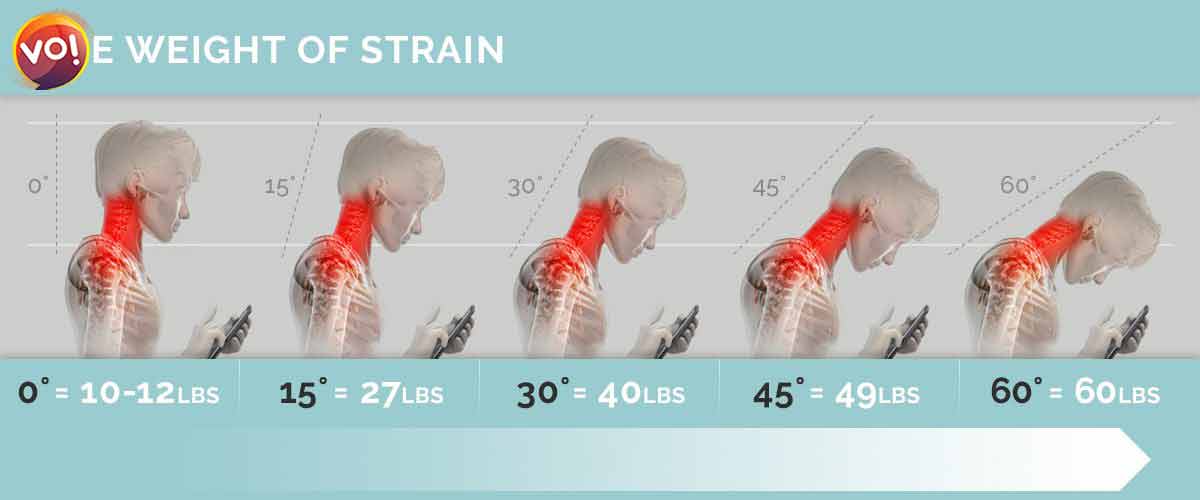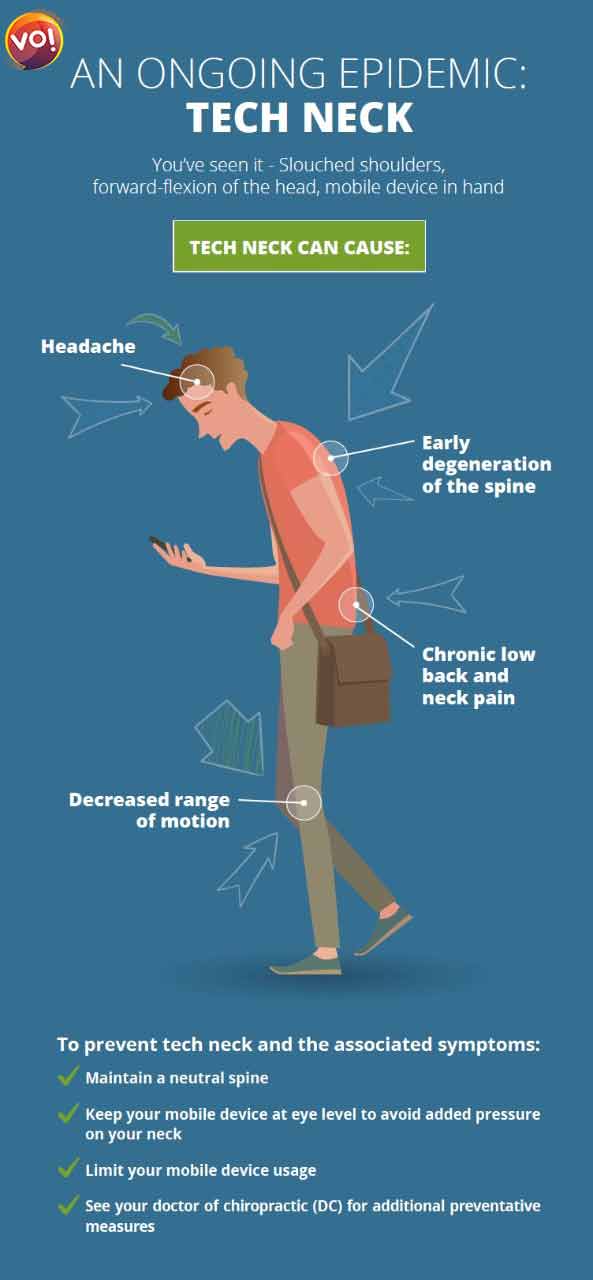Tech neck results from the body position we often subconsciously assume when looking at screens. In this position, your chin comes forward, your shoulders round forward, and often your neck is flexed to look down at your phone, keyboard, and/or computer for an extended period of time. The unnatural position causes microtrauma and stress to the upper back and neck area, and leads to pain and discomfort.
Eventually, it leads to poor posture.
A study by Matthew Cooper, DC, CCSP, chiropractor and founder and CEO of USA Sports Therapy, has cautioned against the malaise now called “tech neck.” It is not simply a pain or frozen shoulder gone wrong. It is a pathological condition that requires therapeutic help.
Symptoms include:
neck and upper back pain and stiffness
trap pain
muscle spasms
localized shoulder pain
headaches
How to prevent tech neck?
Since the beginning of the pandemic, Cooper reports an increase in patients with signs and symptoms of tech neck. “Most people don’t think about the way they are sitting or take corrective action until they are in pain. Because it can take months to develop neck and or upper back pain, and even longer to really change one’s posture, it’s easy to form bad habits in our posture while using our devices,” he notes.

Ways to ward off the condition include the following:
1. Rethink your workstation
Because many home offices are dining room tables, sofas, and beds, they don’t provide an environment for good postural positioning. Invest in ergonomically correct chairs made for working on a computer.
2. Pay attention to your posture
Sit with your shoulders against the back of your chair and placing your keyboard on your lap to prevent you from bringing your chin and shoulders forward. Most people lean over their desk to type. This, say medics, is the main culprit.
3. Take breaks
Take a break from the computer every 30 minutes to an hour. During these breaks, stretch the neck and shoulders. For tech neck due to repetitive smartphone use, take frequent breaks and use less. If watching movies or doing other activities for a long time, one can get a cellphone holder so the phone can be placed at eye level.
4. Perform stretches
Every hour, perform Bruegger exercises. To do this, sit up straight at the end of your chair with your arms extended out and behind your body. Squeeze your shoulder blades together, with your palms facing up, and tuck in your chin so your head is over your body. Hold this position for 30 seconds at a time while taking deep breaths. Then repeat three to four times. However, Cooper warns that when most people have tightness or pain in their neck, they stretch their neck by touching their chin to their chest.

“This is the worst thing you can do for tech neck. Tech neck causes an elongation with weakness to the posterior neck muscles. In fact, anyone with tech neck should do the opposite. Stretch the front part of your neck and strengthen, not stretch, the back part of your neck,” he suggests.
Also Read: Scientists Discover New Muscle layer Inside Human Jaw That Helps It In Stabilisation












